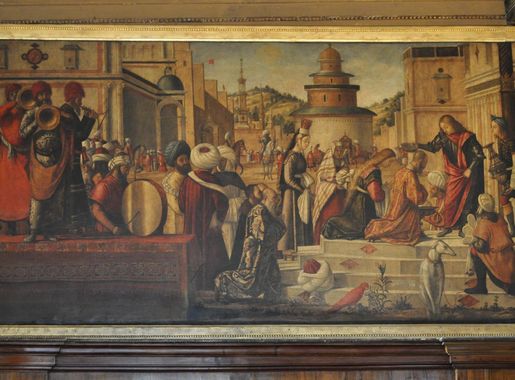
Castello: The Hidden Gem of Venice
Explore Castello, Venice's largest and oldest district, where history, culture, and local life beautifully intertwine away from the crowded tourist areas.
Welcome to Castello, Venice's largest and oldest sestiere (district). This charming neighbourhood offers a delightful mix of history, culture, and local life, making it a must-visit for any traveller. Unlike the bustling tourist hotspots of San Marco, Castello provides a more authentic Venetian experience, where you can truly immerse yourself in the city's rich heritage. Stroll through the narrow, winding streets and discover historic landmarks like the Arsenale, once the heart of Venice's naval power, and the beautiful Church of San Zaccaria, which dates back to the 9th century. The neighbourhood's eastern end, known as the 'Giardini della Biennale,' plays host to the world-renowned Venice Biennale, an international art exhibition that attracts visitors from all over the globe. Castello is also home to some of Venice's most picturesque canals and bridges. Enjoy a leisurely gondola ride or simply wander along the waterfront, taking in the stunning views of the Venetian Lagoon. Don't miss the opportunity to explore the local markets and sample traditional Venetian cuisine at one of the many charming trattorias and osterias scattered throughout the area. Whether you're a history buff, an art lover, or simply looking to escape the crowds, Castello offers a unique and enriching Venetian experience that you won't soon forget.
Local tips in Castello
- Visit the Arsenale early in the morning to avoid crowds and enjoy a peaceful experience.
- Check the schedule for the Venice Biennale and plan your visit around this world-famous art event.
- Wear comfortable shoes; the streets are cobblestoned and can be uneven.
- Try the local seafood dishes at a traditional osteria for an authentic taste of Venetian cuisine.
- Carry a map or download an offline map app; the narrow streets can be confusing to navigate.
Castello: The Hidden Gem of Venice
Welcome to Castello, Venice's largest and oldest sestiere (district). This charming neighbourhood offers a delightful mix of history, culture, and local life, making it a must-visit for any traveller. Unlike the bustling tourist hotspots of San Marco, Castello provides a more authentic Venetian experience, where you can truly immerse yourself in the city's rich heritage. Stroll through the narrow, winding streets and discover historic landmarks like the Arsenale, once the heart of Venice's naval power, and the beautiful Church of San Zaccaria, which dates back to the 9th century. The neighbourhood's eastern end, known as the 'Giardini della Biennale,' plays host to the world-renowned Venice Biennale, an international art exhibition that attracts visitors from all over the globe. Castello is also home to some of Venice's most picturesque canals and bridges. Enjoy a leisurely gondola ride or simply wander along the waterfront, taking in the stunning views of the Venetian Lagoon. Don't miss the opportunity to explore the local markets and sample traditional Venetian cuisine at one of the many charming trattorias and osterias scattered throughout the area. Whether you're a history buff, an art lover, or simply looking to escape the crowds, Castello offers a unique and enriching Venetian experience that you won't soon forget.
Iconic landmarks you can’t miss
Doge's Palace
Discover the rich history and breathtaking architecture of Doge's Palace, a Venetian masterpiece that captures the essence of the Republic of Venice.
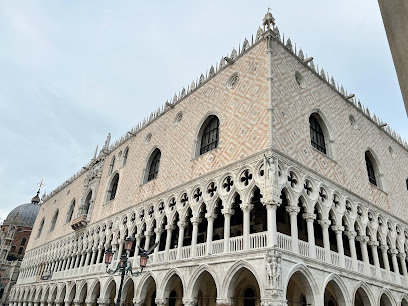
Bridge of Sighs
Discover the haunting beauty and historical significance of the Bridge of Sighs, Venice's iconic landmark connecting the Doge's Palace to the prison.
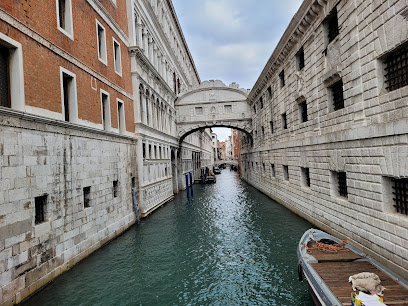
Giardini della Biennale
Discover the serene beauty of Giardini della Biennale, a garden that harmonizes art and nature in the heart of Venice.
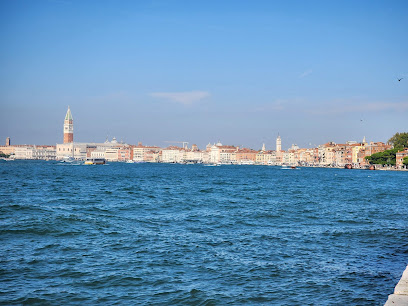
Venetian Arsenal
Discover the Venetian Arsenal, a historical marvel showcasing Venice's maritime heritage through impressive architecture and captivating exhibits.
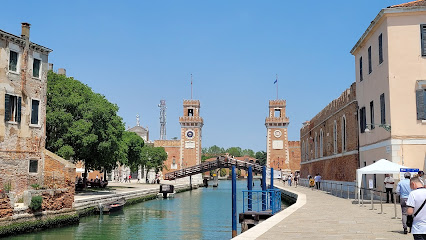
Basilica dei Santi Giovanni e Paolo
Experience the exquisite beauty and historical significance of the Basilica dei Santi Giovanni e Paolo, a must-see Gothic masterpiece in Venice.
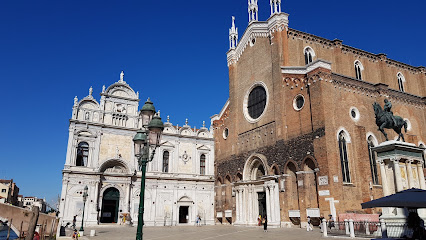
Grand Canal
Discover the Grand Canal, Venice's iconic waterway, where stunning architecture and cultural treasures await every traveler.
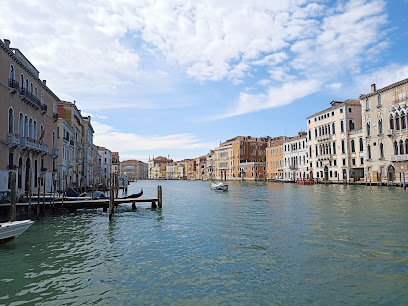
Parco delle Rimembranze
Discover tranquility and natural beauty at Parco delle Rimembranze, a hidden gem in Venice perfect for relaxation and scenic walks.
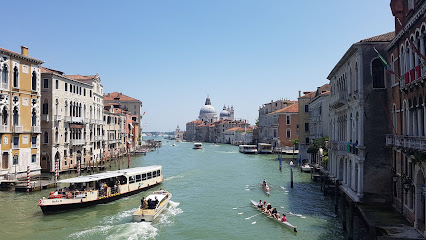
Museo di Palazzo Grimani
Explore the exquisite art and architecture of Museo di Palazzo Grimani, a Venetian gem showcasing a rich collection of antique sculptures in a stunning historical setting.
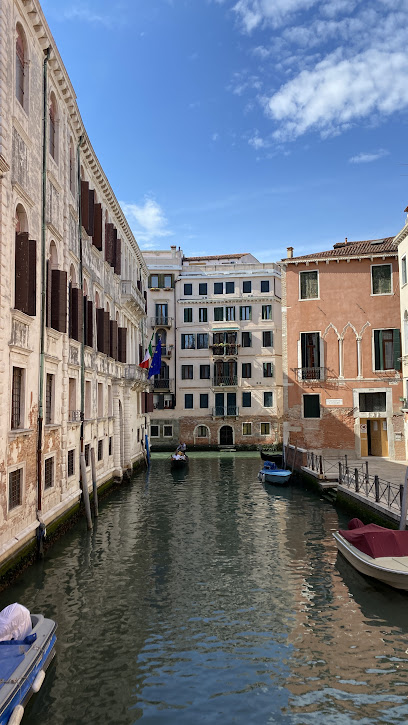
Basilica di San Pietro di Castello
Discover the serene beauty of Basilica di San Pietro di Castello, a hidden gem in Venice showcasing stunning architecture and rich history.
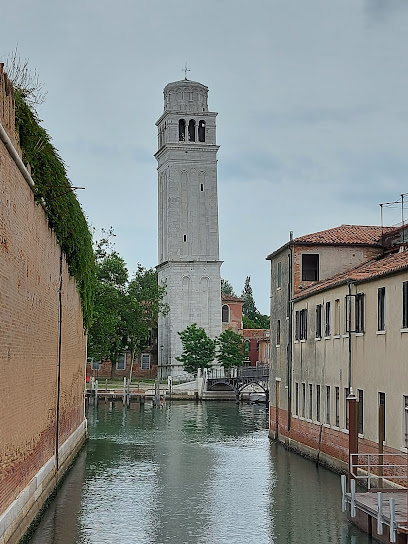
Foresteria Valdese Venezia
Discover the charm of Venice at Foresteria Valdese, your ideal base for exploring the city's rich culture and stunning architecture.
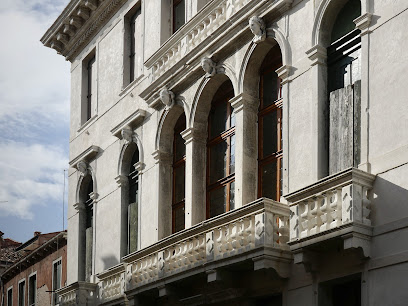
Palazzo delle Prigioni
Explore the eerie beauty of Palazzo delle Prigioni, Venice's historic prison turned museum, rich with stories of justice and architectural splendor.
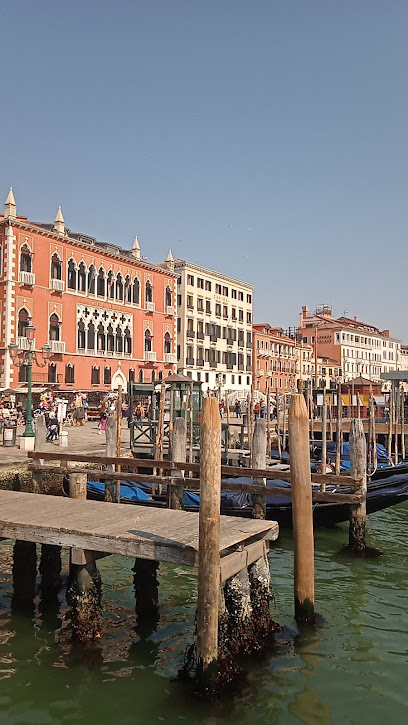
Vecchia Murano V.M. srl
Explore the exquisite craftsmanship of Venetian glass at Vecchia Murano, where artistry meets tradition in the heart of Venice.
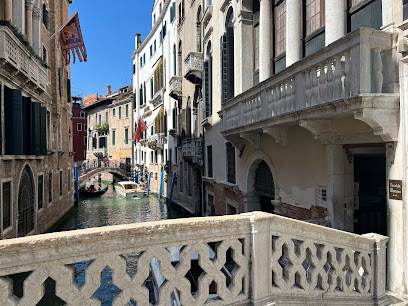
Residenza Veneziana
Experience the charm of Venice at Residenza Veneziana, a cozy bed & breakfast nestled by the serene canals, perfect for your Italian getaway.

Monument to Paolo Sarpi
Explore the Monument to Paolo Sarpi in Venice, a stunning tribute to the city's rich history and cultural heritage amidst picturesque canals.
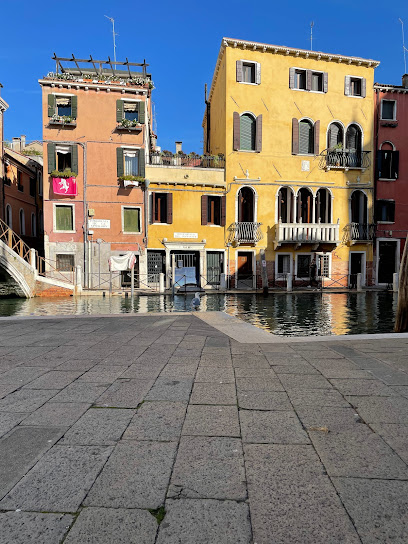
Campo San Piero de Casteo
Experience the serene beauty of Campo San Piero de Casteo, a hidden garden in Venice, perfect for relaxation and picturesque strolls.
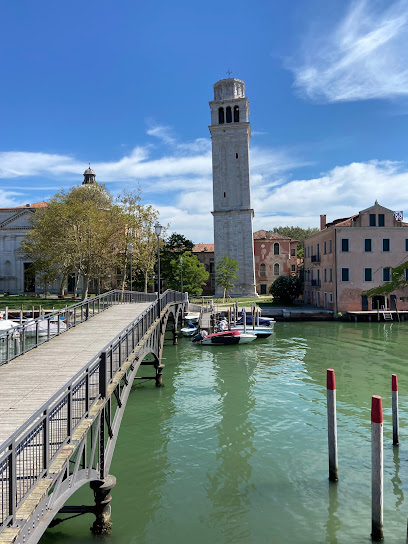
Unmissable attractions to see
Giardini della Biennale
Explore the lush landscapes and artistic treasures of Giardini della Biennale, a serene oasis in the heart of Venice perfect for art lovers and nature enthusiasts.
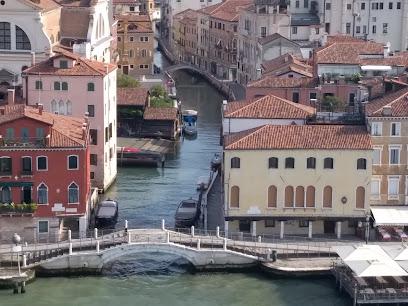
Venetian Arsenal
Discover the Venetian Arsenal: a historic site that reveals the maritime heritage and shipbuilding legacy of Venice's storied past.
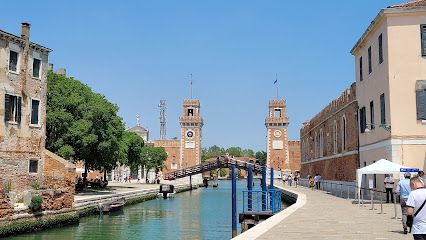
St Mark's Campanile
Discover the breathtaking views and rich history of St Mark's Campanile, an iconic Venetian landmark that showcases the beauty of Venice from above.

Corte Morosina
Discover the enchanting Corte Morosina, a hidden gem in Venice where history meets breathtaking scenery, perfect for culture lovers and explorers alike.
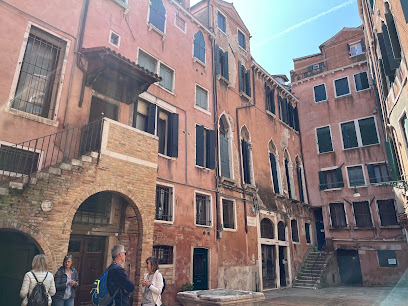
Blick auf den Rio del Vin
Discover the enchanting Rio del Vin in Venice, a perfect blend of scenic beauty and rich history along Riva degli Schiavoni.
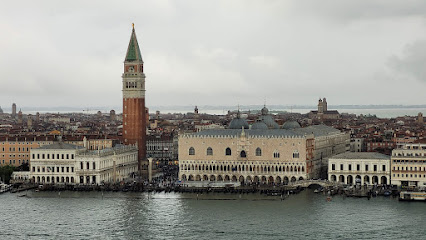
Essential places to dine
Nevodi
Discover authentic Italian cuisine at Nevodi, where fresh seafood meets traditional Venetian hospitality in the heart of Venice.
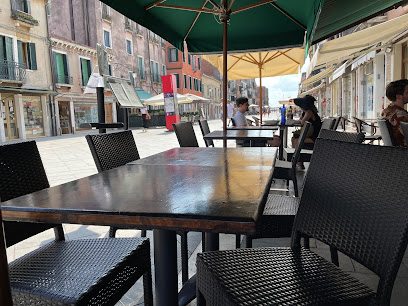
Osteria Al Portego
Experience authentic Venetian cuisine at Osteria Al Portego, where traditional flavors meet a charming atmosphere in the heart of Venice.

Baci & Pasta
Experience authentic Italian cuisine at Baci & Pasta in Venice - where fresh flavors meet traditional recipes in a cozy setting.
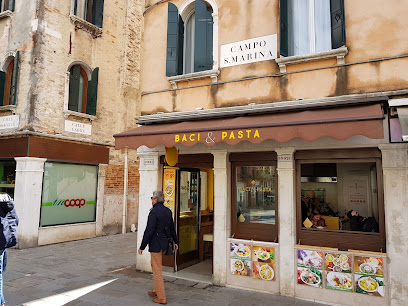
Ristorante Bacarandino ai Corazzieri
Savor authentic Venetian dishes at Ristorante Bacarandino ai Corazzieri – where tradition meets taste in Venice's enchanting atmosphere.
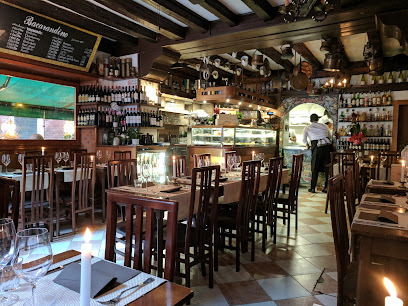
Ristorante Da Carletto
Experience authentic Italian cuisine at Ristorante Da Carletto in Venice—a hidden gem offering delightful flavors in a cozy atmosphere.
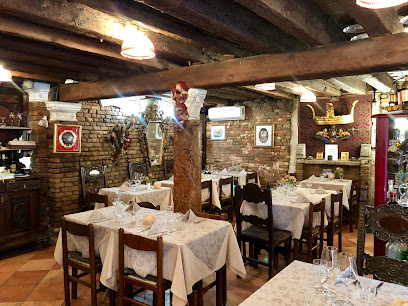
Ristorante ai Barbacani
Experience authentic Venetian seafood at Ristorante ai Barbacani – where tradition meets flavor in the heart of Venice.
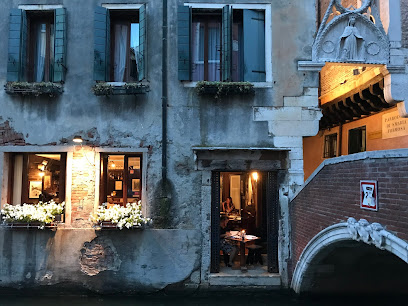
Bacaretto Cicchetto
Experience authentic Italian cuisine at Bacaretto Cicchetto in Venice - where traditional flavors meet vibrant atmosphere.
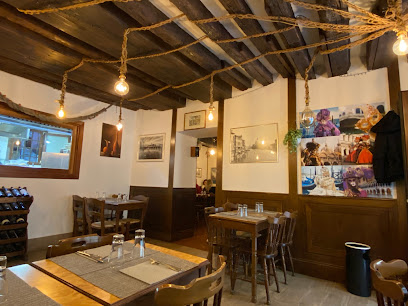
Antica Osteria Ai Tre Leoni
Discover Antica Osteria Ai Tre Leoni: A delightful restaurant in Venice offering authentic Italian cuisine in a charming setting.
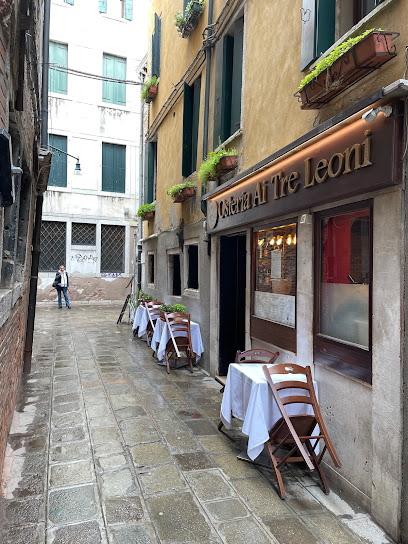
Hostaria Castello
Experience authentic Venetian cuisine at Hostaria Castello, where tradition meets flavor in the heart of Venice.
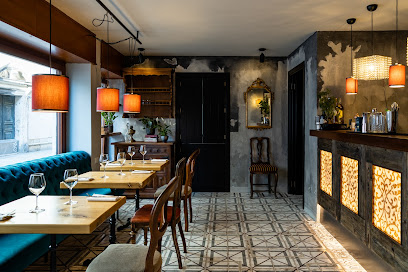
Osteria Da Bubi
Discover the heart of Venetian cuisine at Osteria Da Bubi – where tradition meets flavor in every dish.
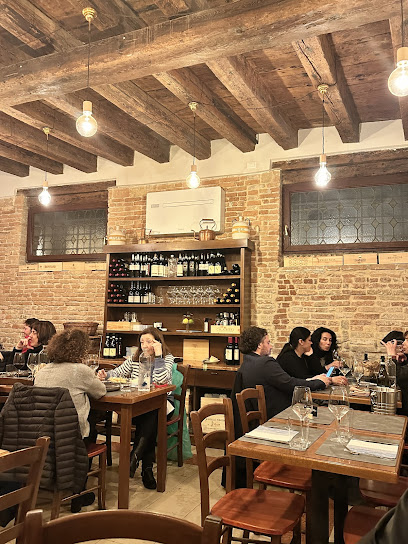
Markets, malls and hidden boutiques
L'albero Venezia
Discover unique fashion accessories that embody Venetian craftsmanship at L'albero Venezia in the heart of Castello.

MADONERI
Explore MADONERI in Venice for unique handmade crafts that capture the city's rich artistic heritage.
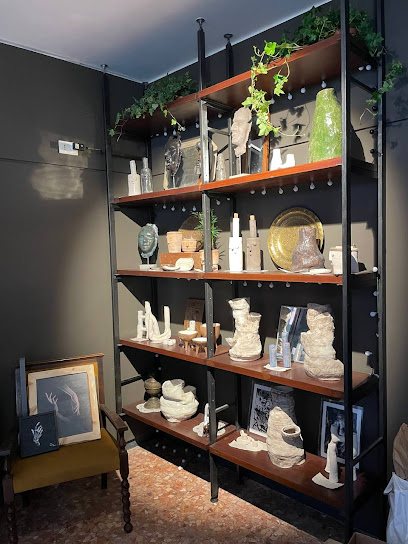
Trilly Collezioni Esclusive
Explore the charm of Venetian craftsmanship at Trilly Collezioni Esclusive, where every handcrafted item tells a unique story of artistry and tradition.
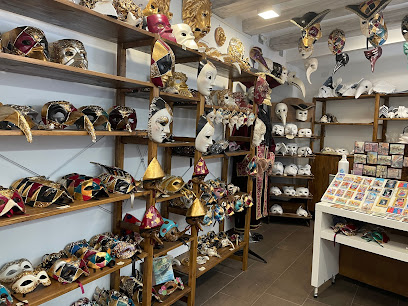
Marbled Paper and Leather Store (Venetian crafts)
Explore the artisanal wonders of Venice at the Marbled Paper and Leather Store, where traditional craftsmanship meets timeless beauty.
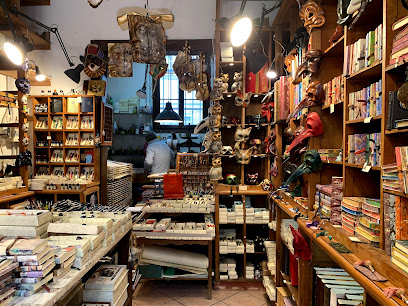
Gioja Antica Scrittura
Explore Gioja Antica Scrittura, Venice's hidden gem for unique artisanal gifts and handcrafted stationery, perfect for souvenirs.
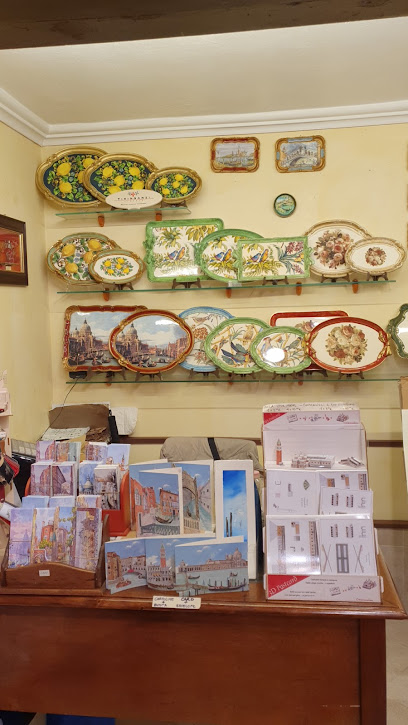
Baby's Boutique
Explore Baby's Boutique in Venice, where every antique tells a story and offers a piece of history to cherish forever.
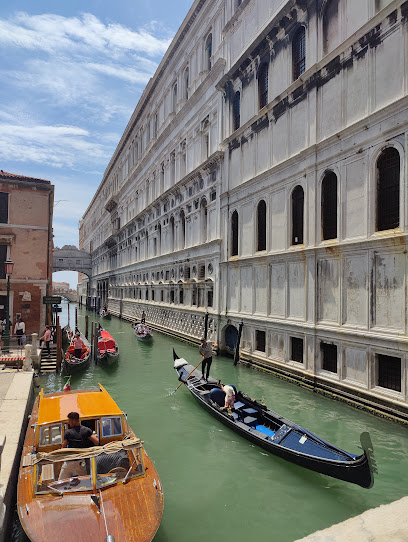
veniceshop.it
Explore an enchanting novelty store in Venice filled with unique souvenirs and artisanal treasures that embody the city's rich culture.

Frizzi E Lazzi
Discover unique souvenirs and local art at Frizzi E Lazzi, a charming gift shop in the heart of Venice, Italy.
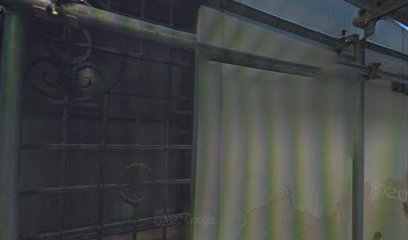
Terre sur livre
Explore the vibrant world of Venetian crafts at Terre sur Livre, where unique gifts and local artistry come together in the heart of Venice.
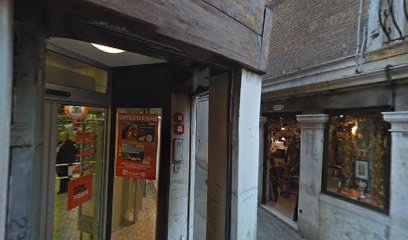
Boutique souvenir
Explore a charming gift shop in Venice offering unique souvenirs that reflect the city's rich cultural heritage and artistry.

Essential bars & hidden hideouts
Snack Bar Castello
Discover the vibrant flavors of Venice at Snack Bar Castello, where delicious snacks meet creative cocktails in a charming atmosphere.
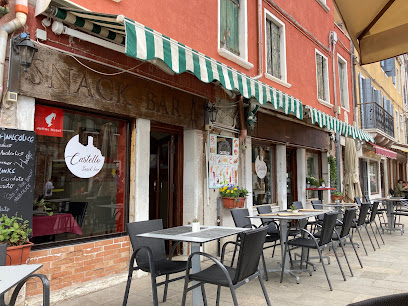
Vincent Bar
Discover the charm of Vincent Bar in Venice, where refreshing drinks meet a vibrant atmosphere for an unforgettable experience.
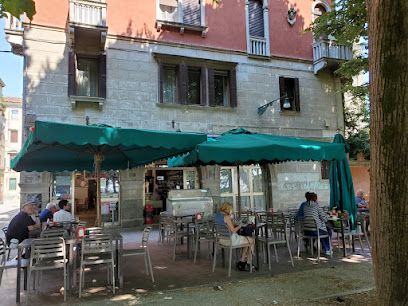
Wine Bar 5000
Experience the charm of Venice at Wine Bar 5000, where exquisite wines and authentic espresso await in a cozy atmosphere.
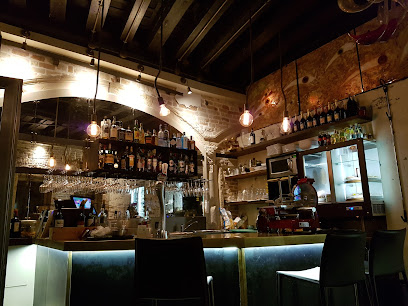
La Barrique Wine Bar
Experience the essence of Italian wines at La Barrique Wine Bar, a charming spot in Venice offering exquisite flavors and a cozy atmosphere.
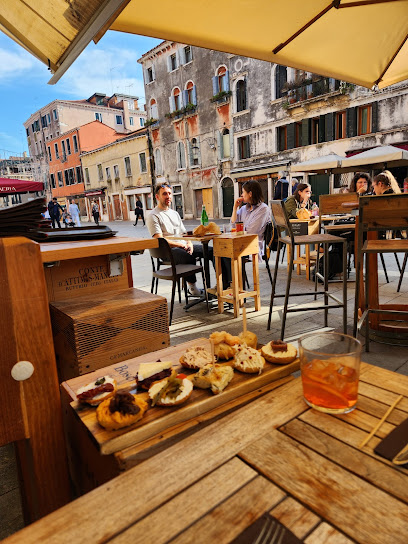
Crazy Bar Venezia
Discover Crazy Bar Venezia, where local culture meets vibrant nightlife in the heart of Venice, perfect for drinks and delicious bites.
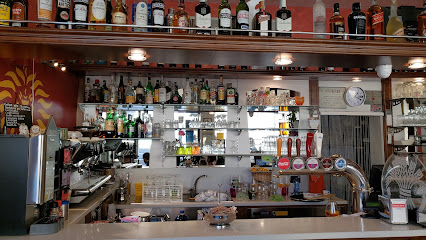
HEY RICH BAR
Discover the vibrant ambiance and tantalizing drinks at HEY RICH BAR, a must-visit destination for tourists in the heart of Venice.
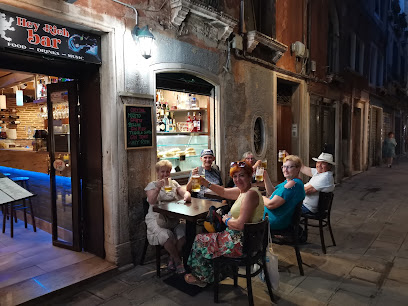
Bar Melograno
Discover the charm of Bar Melograno, a delightful wine bar in Venice, offering exquisite wines and authentic Italian cuisine.
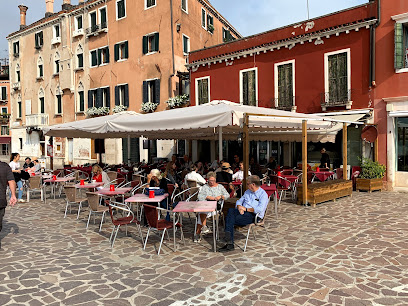
Bar Dandolo
Discover the enchanting Bar Dandolo, a serene Venetian bar offering exquisite drinks and stunning views in the heart of Venice.
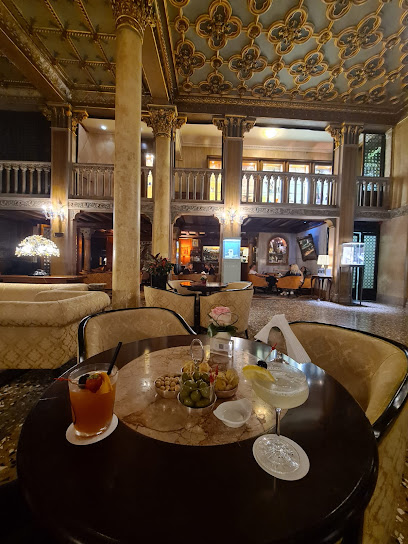
Alchemia Bar
Experience the vibrant cocktail scene of Venice at Alchemia Bar, offering innovative drinks in a charming canal-side setting.
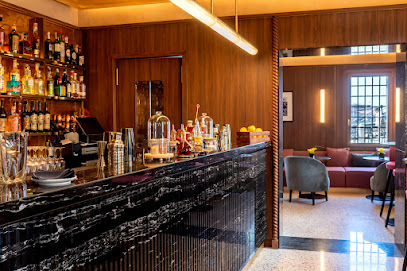
Peacock bar
Discover the charm of Venice at the Peacock Bar, a hidden gem offering signature cocktails and an inviting ambiance amidst the city's enchanting canals.
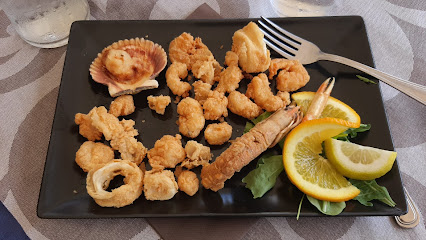
Local Phrases
-
- HelloCiao
[chow] - GoodbyeArrivederci
[ah-ree-veh-der-chee] - YesSì
[see] - NoNo
[noh] - Please/You're welcomePer favore/Prego
[pair fah-voh-reh/preh-goh] - Thank youGrazie
[grah-tsee-eh] - Excuse me/SorryMi scusi/Scusa
[mee skoo-zee/skoo-zah] - How are you?Come stai?
[koh-meh sty] - Fine. And you?Bene. E tu?
[beh-neh. eh too] - Do you speak English?Parli inglese?
[pahr-lee een-gleh-zeh] - I don't understandNon capisco
[nohn kah-pee-skoh]
- HelloCiao
-
- I'd like to see the menu, pleaseVorrei vedere il menu, per favore
[vohr-ray veh-deh-reh eel meh-noo, pair fah-voh-reh] - I don't eat meatNon mangio carne
[nohn mahn-joh kar-neh] - Cheers!Salute!
[sah-loo-teh] - I would like to pay, pleaseVorrei pagare, per favore
[vohr-ray pah-gah-reh, pair fah-voh-reh]
- I'd like to see the menu, pleaseVorrei vedere il menu, per favore
-
- Help!Aiuto!
[ah-yoo-toh] - Go away!Vattene!
[vah-tteh-neh] - Call the Police!Chiama la polizia!
[kyah-mah lah poh-lee-tsee-ah] - Call a doctor!Chiama un medico!
[kyah-mah oon meh-dee-koh] - I'm lostMi sono perso
[mee soh-noh pehr-soh] - I'm illSto male
[stoh mah-leh]
- Help!Aiuto!
-
- I'd like to buy...Vorrei comprare...
[vohr-ray kohm-prah-reh] - I'm just lookingSto solo guardando
[stoh soh-loh gwahr-dahn-doh] - How much is it?Quanto costa?
[kwahn-toh koh-stah] - That's too expensiveÈ troppo caro
[eh troh-poh kah-roh] - Can you lower the price?Puoi abbassare il prezzo?
[pwoy ahb-bahs-sah-reh eel preht-soh]
- I'd like to buy...Vorrei comprare...
-
- What time is it?Che ora è?
[keh oh-rah eh] - It's one o'clockÈ l'una
[eh loo-nah] - Half past (10)Sono le dieci e mezza
[soh-noh leh dee-eh-chee eh meh-tsah] - MorningMattina
[maht-tee-nah] - AfternoonPomeriggio
[poh-meh-ree-joh] - EveningSera
[seh-rah] - YesterdayIeri
[yeh-ree] - TodayOggi
[oh-djee] - TomorrowDomani
[doh-mah-nee] - 1Uno
[oo-noh] - 2Due
[doo-eh] - 3Tre
[treh] - 4Quattro
[kwah-ttroh] - 5Cinque
[cheen-kweh] - 6Sei
[seh-ee] - 7Sette
[seht-teh] - 8Otto
[oht-toh] - 9Nove
[noh-veh] - 10Dieci
[dee-eh-chee]
- What time is it?Che ora è?
-
- Where's a/the...?Dov'è il/la...?
[doh-veh eel/lah] - What's the address?Qual è l'indirizzo?
[kwahl eh leen-dee-reett-soh] - Can you show me (on the map)?Puoi mostrarmi (sulla mappa)?
[pwoy mohs-trahr-mee (sool-lah mahp-pah)] - When's the next (bus)?Quando passa il prossimo (autobus)?
[kwahn-doh pahs-sah eel prohs-shee-moh (ow-toh-boos)] - A ticket (to ....)Un biglietto (per ....)
[oon beel-lyet-toh (pair)]
- Where's a/the...?Dov'è il/la...?
History of Castello
-
The neighbourhood of Castello, one of the six sestieri of Venice, has origins that date back to the early days of the city in the 5th century. Originally a marshy area, it gradually became populated as refugees from the mainland sought refuge from barbarian invasions. Castello developed into a vital area of trade and defense, with a series of fortifications and a significant naval presence that played a key role in the Republic of Venice's maritime power.
-
In the late 13th century, the establishment of the Venetian Arsenal marked a turning point for Castello. The Arsenal was a complex of shipyards and armories where ships were constructed and repaired. It became one of the largest industrial complexes in Europe at the time, contributing to Venice's dominance as a maritime power. The Arsenal not only facilitated naval construction but also served as a symbol of the Republic's military might.
-
During the Renaissance, Castello flourished as a cultural hub. The construction of notable churches, such as the Church of San Giovanni in Bragora and the Church of Santa Maria Formosa, showcased the architectural achievements of the period. Additionally, renowned artists and intellectuals frequented the area, further enriching its cultural landscape. The vibrant atmosphere of Castello during this era also contributed to the development of the Venetian Carnival, which remains a significant cultural event today.
-
In the 19th century, Castello became home to the Venice Biennale, an international art exhibition founded in 1895. This event transformed the neighborhood into a focal point for contemporary art and culture. The Biennale attracts artists, curators, and visitors from around the world, making Castello a dynamic space for artistic expression and innovation. The event has significantly influenced the cultural identity of both the neighborhood and the city as a whole.
-
In recent decades, Castello has faced challenges such as tourism pressures and climate change. However, local initiatives have emerged to preserve the neighborhood's historical and cultural heritage. Efforts to maintain the integrity of its architecture and promote sustainable tourism practices have become paramount. The neighborhood continues to celebrate its rich history through cultural events, local artisan markets, and community activities, ensuring that Castello remains a vibrant part of Venice's cultural tapestry.
Castello Essentials
-
Castello is easily accessible from other neighbourhoods in Venice. If arriving by train, take the Vaporetto (water bus) from Santa Lucia Train Station to the nearest stop, Arsenale. From Piazzale Roma, you can also catch a Vaporetto to the same stop or walk along the scenic canals for about 30 minutes. For those coming from San Marco, a leisurely 15-minute walk will take you to Castello, where you'll begin to experience the quieter side of Venice.
-
Castello is best explored on foot, as most attractions are within walking distance. The Vaporetto service is available for longer distances or to reach other neighbourhoods. Bicycles are not commonly used in Venice due to the city's extensive waterways and pedestrian pathways. Instead, consider renting a kayak for a unique view of the canals. Public transport options are limited to water taxis and Vaporettos.
-
Castello is generally a safe area for tourists, but standard precautions should be taken. Be cautious around the less populated areas, especially at night. Pickpocketing can occur in crowded areas such as the Arsenale during peak tourist seasons. It is advisable to keep your belongings secure and avoid displaying valuables.
-
In case of an emergency, dial 112 for immediate assistance. The local police station is located in Castello, near the Campo Santa Maria Formosa. For medical emergencies, there are pharmacies and a hospital nearby. It is advisable to have travel insurance that covers medical emergencies.
-
Fashion: Do dress modestly, especially when visiting churches and religious sites. Don't wear shorts or tank tops in these areas. Religion: Do respect local customs; cover your shoulders and knees when entering sacred spaces. Public Transport: Do be polite and give up your seat to elderly passengers. Don't eat or drink on Vaporettos. Greetings: Do greet locals with a friendly 'Buongiorno.' Don't be overly familiar; a polite distance is appreciated. Eating & Drinking: Do try cicchetti (Venetian tapas) in local bacari. Don't waste food or leave large portions uneaten, as it can be considered disrespectful.
-
To experience Castello like a local, visit the lesser-known markets such as the Mercato di Rialto for fresh produce or stop by small family-run bacari for an authentic Venetian meal. Engage with locals by participating in traditional festivals such as the Festa di San Giovanni. Explore the quiet backstreets to uncover hidden gems like the Biblioteca Nazionale Marciana. Lastly, consider taking a stroll along the waterfront at sunset for breathtaking views of the lagoon.
Trending Landmarks in Castello
-
Doge's Palace
-
Bridge of Sighs
-
Giardini della Biennale
-
Venetian Arsenal
-
Basilica dei Santi Giovanni e Paolo
-
Grand Canal
-
Parco delle Rimembranze
-
Museo di Palazzo Grimani
-
Basilica di San Pietro di Castello
-
Foresteria Valdese Venezia
-
Palazzo delle Prigioni
-
Vecchia Murano V.M. srl
-
Residenza Veneziana
-
Monument to Paolo Sarpi
-
Campo San Piero de Casteo
Nearby Cities to Castello
-
Things To Do in Piran
-
Things To Do in Portorož
-
Things To Do in Izola
-
Things To Do in Verona
-
Things To Do in Koper
-
Things To Do in Rovinj
-
Things To Do in Ravenna
-
Things To Do in Trieste
-
Things To Do in Nova Gorica
-
Things To Do in Sežana
-
Things To Do in Bologna
-
Things To Do in Pula
-
Things To Do in Modena
-
Things To Do in Postojna
-
Things To Do in Opatija





